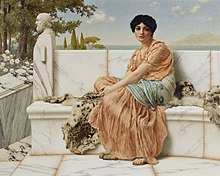Okay Athens is Great in all its meaning. It is wonderful to explore it. It is worth it to buy a travel guide or download one for your phone. Here I will provide you with a small list of things to see within 2 or 3 days:
Parthenon & Museum
That should be priority 1. It is the Parthenon!
I would give 1 full day for this activity, as there are various historical places around Parthenon that you should see as part of the visit. In addition if you really want to know about the history hire a travel guide these are money well spent and they are not expensive.
As part of you ticket to the Parthenon you will gain access to numerous (over 10) other archeological places in Athens, it is a great way to explore Athens by visiting them if time allows.
After you visit the Parthenon make sure you stop to the new Museum of Parthenon, which is in my opinion one of the best Archeological museum world wide. The collection is outstanding, the way they display the collection is amazing and the architecture outstanding. No exaggeration. Make sure you have at least 4 hours to drift.
So in the begining I said 1 day for the Parthenon, and thats true if you see thinks relatively fast and are there for 12 hours. Ideally you would do two visits.
Plaka / Thisio / Psiri / Monastiraki
From the Parthenon in a radius of 1km north there is all the atmosphere of the old and new Greece, enjoy by drifting around the streets.
- Plaka, is the old athens build under the parthenon walk around the streets to have some "retsina" at one of the numerous tavernas.
- Thisio, is the area on the back of the Parthenon, and you can walk there straight from the Parthenon. It is a pretty walk. Thisio is great to see the sunset and see the sun fading away from the Parthenon. Many coffe places and tavernas to eat.
- Psiri, it used to be one of the infamous areas of Athens but now is one of the most vibrant and hype ones. It is quite magnificent how many bars, coffee places and tavernas there are per square meter.
- Monastiraki, is a very touristic assortment of streets with a lot of small retailers and various merchandising. You can find nice small gifts to keep your Athens memory alive. Its a very distinctive place and worths walking.
Kavouri
Few tourists will go there, mostly locals. It is a very picturesque beach with a small castle in the see, sandy beach, bars and wonderful views of the Athenian coastline. It is a great reason to go and have a swim and by doing so see a different aspect of the town and its beauty.
Sounio
Cape Sounio is far from Athens town it is 2 hours drive or 2 to 2:30h with the bus. If you do not rent a car, take the bus or you can arrange a day trip with a travel agent.
So what is there? As you can see above it is a temple, and this is the Poseidon temple! Which in my opinion is the most cool of all the Gods. In addition the view there is magnificent as you can tell. Another bonus of going there is that you will see all the coastline of Athens, and that is something that you will love, great ride!
The above activities will take you 2 days minimum to do. There are so much more to see in Athens and for that reason is highly recommended that you take a good travel guide.
I highly recomend this TripAdvisor mobile app, it has many walks that are very good, I used it for Barcelona and was awesome!
Geia sas!







